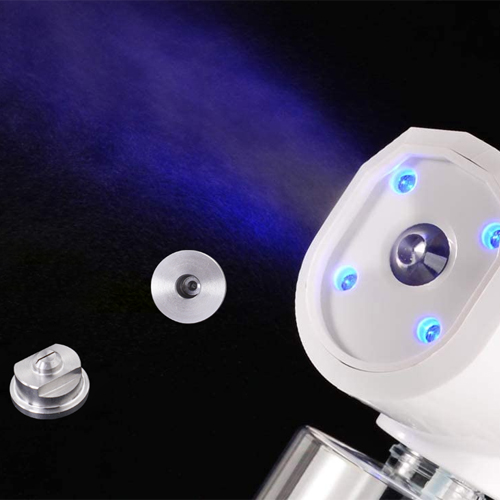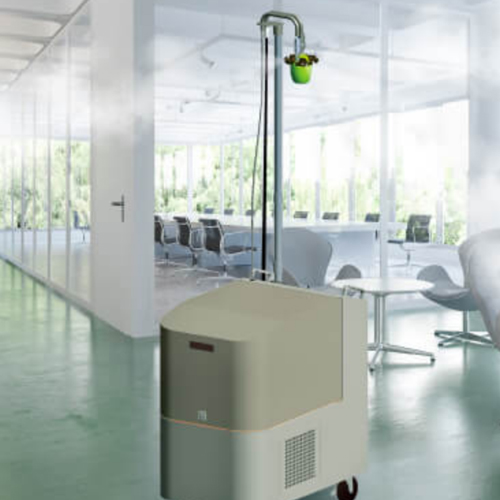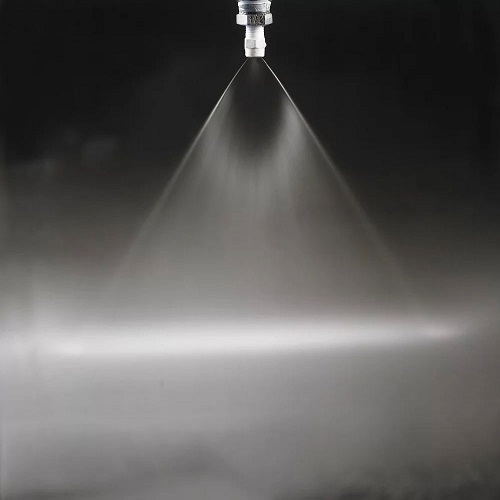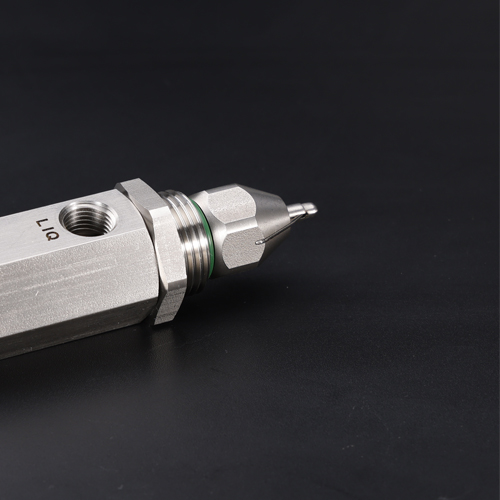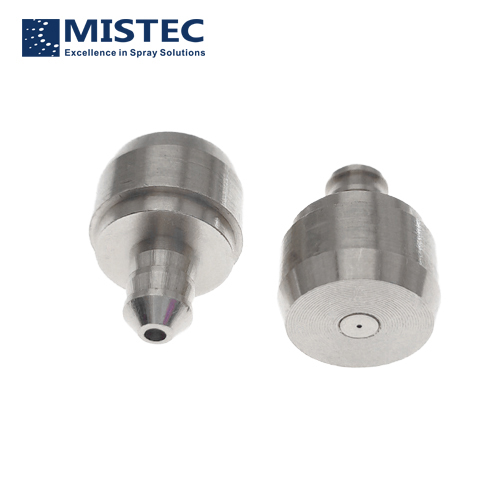What is a disinfectant mist?
A disinfection mist is one of many disinfection methods. A disinfection mist means that the atomization system atomizes the disinfectant into extremely fine disinfection droplets. After atomization, the disinfection droplets can float in the air, increasing the contact time with bacteria, and achieving disinfection.Due to the disinfection liquid misting can be full of more space, as well as reach some table gaps, bed gaps and other very hidden places.
Atomizing air disinfection machine with disinfectant can make the liquid medicine through a special spray device with 5 micron droplets below the high speed atomization, quickly diffuse into the air, because of the subtle droplets, strong diffusion, all-round disinfection, no residue.No need to move, a single machine can cover 100 square meters in 10min.So as to quickly and effectively kill the virus in the air, sterilization, odor removal, inhibit bacteria, virus spread in the air.
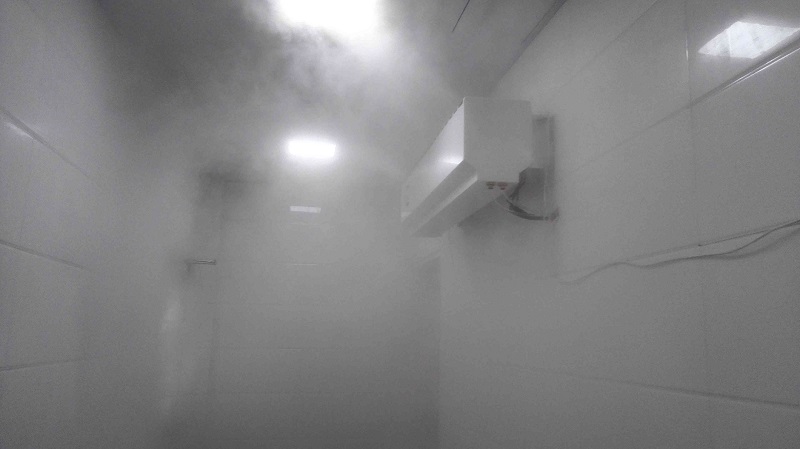
The types of a disinfectant mist
Hydrogen peroxide can be oxidized or reduced under different conditions.Oxidants, bleach agents, disinfectants, dechlorination agents, and rocket fuel, organic or inorganic peroxide, foam and other porous substances, etc.
Health hazard: inhalation of vapor or mist of this product has strong irritation to respiratory tract.
Direct eye contact with fluid can cause irreversible damage and even blindness.
Iodine disinfectant belongs to medium effect disinfectant: medium effect, quick effect, low toxicity, no irritation to skin, corrosive to bivalent metal, greatly affected by organic matter, good stability.
Compound iodine (povidone iodine)
Ethanol (alcohol) is a medium effect disinfectant: medium effect, quick effect, non-toxic, irritating to the skin, non-corrosive to metals, greatly affected by organic matter, volatile, unstable and other characteristics.
Glutaraldehyde is a sterilizer: it has a broad spectrum, efficient sterilization effect, odor and low toxicity.
Less corrosion to metal.
Peracetic acid is a sterilizer: with broad spectrum, high efficiency, low toxicity, corrosive to metal or fabric, affected by organic matter, poor stability.
Hydrogen peroxide is a highly effective disinfectant: it has a broad spectrum, high efficiency, quick effect, non-toxic, corrosive to metals or fabrics.
Chlorine dioxide is a highly effective disinfectant: broad spectrum, high efficiency and quick effect.
Corrosive to metal, bleaching effect on fabric, affected by organic matter, activation liquid and diluent unstable.
Chlorine-containing disinfectants are highly effective disinfectants, with broad spectrum, high efficiency, low toxicity, strong irritating smell, corrosive to metals, bleaching effect on fabrics, very affected by organic matter, disinfectant is not stable.
There are nine kinds of commonly used disinfectants in terms of components: chlorine-containing disinfectants, peroxide-based disinfectants, aldehydes, alcohols, iodine-containing disinfectants, phenolic disinfectants, ethylene oxide, biguidine and quaternary ammonium salts.
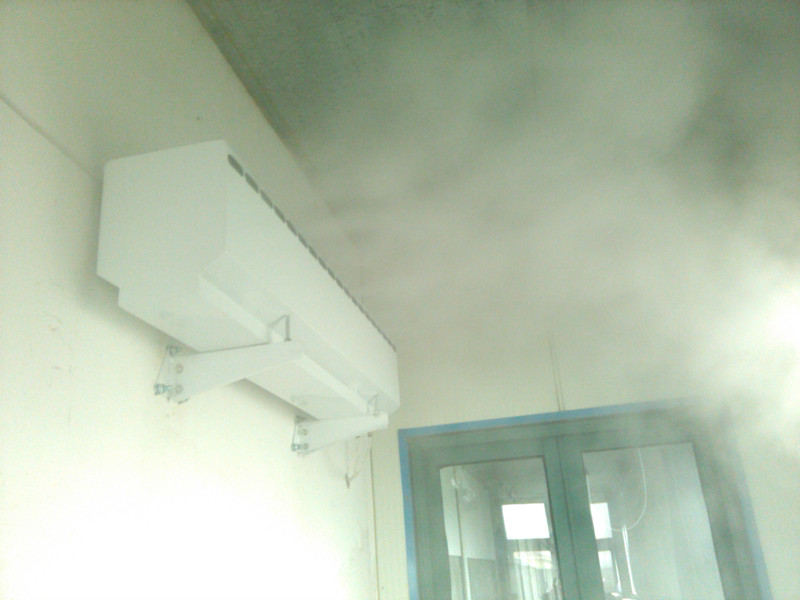
The advantages of a disinfectant mist
1. Atomizing droplets are very fine.
2. Long exposure to bacteria.
3. Large diffusion space and wide disinfection area.
4. Fast and safe.
5. Does not wet the surface.
The productions of a disinfectant mist
1. Atomization system
2. Atomizing nozzle
3. Dry atomizing nozzle
4. Air atomizing nozzle
In what form do viruses, bacteria and dust exist in the air?
1, viruses
With no cellular structure, it relies on the host cell to survive and reproduce through constant replication.
Using the nucleotides and amino acids of the host cell to autonomously synthesize its own components, assembling the next generation of individuals.
The replicating biological viruses lyse host cells and are released to infect new host cells.
2, bacteria,
With a particle size of only a few microns, bacteria are the king of the microbial world.
It stands alone as a suspended particle that floats in the air with the wind
Can also stretch, lying in the respiratory droplets of human and livestock
Can also jump on the fluttering dust...
The only thing it fears:
Is the lack of nutrients in the air and the proper temperature, exposure to sunlight and air is too dry and destroyed.
Only resistant bacteria and fungi or bacterial buds persist for a long time.
3, dust
Dust in the air exists as solid particles.
Dust of more than 10 microns, known as falling dust, can fall naturally on the ground in a certain period of time...
Dust smaller than 10 microns, called fine particulate matter, can float in the air for a long time...
Dust smaller than 2.5 microns, called fine particles, stays in the atmosphere for a long time, travels a long distance, and can penetrate the alveoli to the blood.


